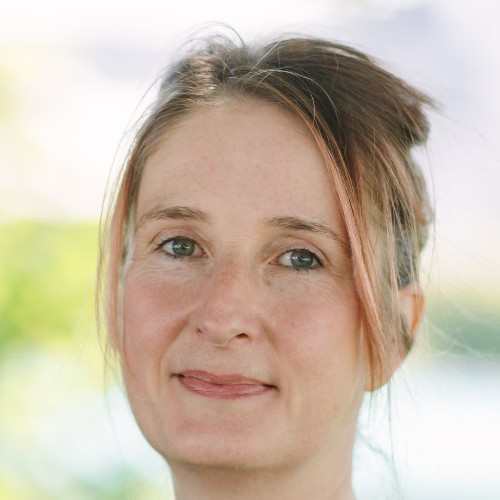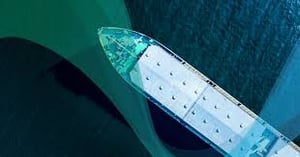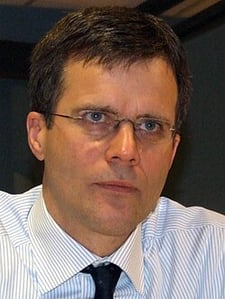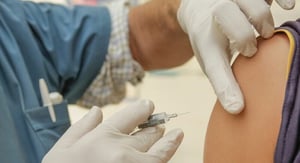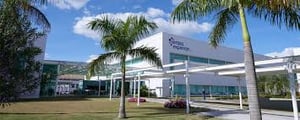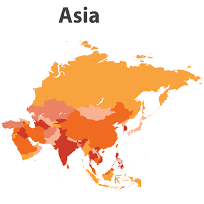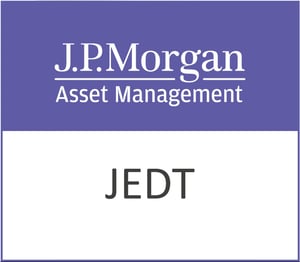Surface Transforms Plc LONM:SCE) has today announced its preliminary results for the year ended 31 May 2018. The Company’s Annual Report and Accounts for the year ended 31 May 2018, together with a notice convening the Company’s Annual General Meeting at finncap, 60 New Broad Street, London, EC2M 1JJ on Tuesday 11 December 2018 at 11.00am which will be posted to shareholders in due course. Copies of the Annual Report and Accounts will be available on the Company’s website: www.surfacetransforms.com as from this posting date.
Highlights
Financial highlights
· Revenues increased £661k to £1,363k (2017: £702k)
· Gross margin percentage increased to 67.4% (2017: 61.0%)
· LBITDA (including tax credit and excluding share-based payments and non-recurring staff costs) reduced to £1,382k (2017: £1,944k)
· Research costs increased to £2,002k (2017: £1,916k) which has been partially offset by increased R&D tax credit of £465k (2017: £356k)
· Loss after taxation of £1,834k (2017: £2,172k)
· Loss per share of 1.66p (2017: 2.41p)
· Cash used in operating activities increased by £948k to £2,168k (2017: £1,220k)
· Cash at 31 May 2018 was £923k (2017: £1,532k)
· Capital expenditure in the year was £2,024k (2017: £2,075k)
Customer and Operational highlights
· All furnaces ordered for Production Cell One and all but one, in commissioning stage in Knowsley
· Small Volume Production cell (SVP) is in steady state production in Knowsley.
· Successful equity placing raised £3,443k net of expenses in the financial year and a further equity placing post the financial year end raised an additional £1,461k after expenses
· Additional demand from Aston Martin (mainly related to dealer spares) has added an additional £1m of revenue to the programme. Start of Production (SOP) of the Company’s products remains unchanged at Q1 2019
· Progress continues on testing with other Original Equipment Manufacturers (OEMs)
· The US Department of Defence (DOD) has confirmed the order with the aircraft manufacturer for the target aircraft programme on which the Company has already successfully completed product development. However there is still ambiguity over the precise SOP date for the programme. Commercial discussions are therefore focussed on pre-SOP development income
· Post financial year-end the Company was awarded the quality certification approval IATF 16949, a pre-requisite for supply to the European automotive industry as it mirrors the German VDA standard.
Chairman’s Statement
The last year has seen further tangible progress on our journey from an early stage developer to a mainstream profitable volume automotive components supplier. This progress has been underpinned by two successful fundraisings, one in the financial year, one post year-end, totalling £4.9m, net of expenses, which enabled the Company to finalise the purchase of the capital equipment required to move the capacity of Knowsley to 20,000 discs per year.
Whilst the rationale for moving to Knowsley was primarily about capacity, there was also always an equal objective to improve process structure and efficiency. In respect of which, the award of the quality standard IATF 16949 in July 2018 vindicates the efforts of management and staff. Following this process approval, the operational focus has moved to commissioning the recently purchased equipment in OEM Production Cell One within which the key task is the commissioning of the furnaces.
The large OEM customers have noted this “step change” operational progress and, whilst there is still work to do on “supplier qualification”, the only substantive outstanding items remain the need to consistently pass the outstanding tests required to approve the products for adoption. Progress is being made with all the previously notified OEMs.
Operational Progress
Knowsley facility: The project of transferring production from Ellesmere Port to Knowsley was successfully completed in the year. This production unit is now known as “Small Volume Production cell” (SVP).
Work on the critical capacity constraints in the SVP cell has moved capacity from previously notified automotive revenue capacity of approximately £2.5m to £4m. As a result management believe that the Aston Martin Valkyrie contract can be produced in this cell providing some flexibility with capacity discussions the Company is having with customers, including OEM 3 and OEM 5.
OEM Production Cell One: This is the first of what will eventually be five “identical” cells ultimately providing capacity equivalent to approximately £50m revenue on the Knowsley site. It should be noted however that production Cells Two to Five are neither currently financed nor (in detail) planned.
The focus of the Board’s operational activity is therefore now the procurement and commissioning of the capital equipment for OEM Cell One. The equipment required can be split into machine tools and furnaces. The former, including test equipment, are “off the shelf’, largely replicate existing knowledge and are not risk items on the project plan.
Accordingly management focus within this OEM cell has largely been on the furnaces. All of the five furnaces have been ordered, largely paid for, and are at various stages of commission in Knowsley, with two of them now being used for production. At the other end of the readiness spectrum, as a risk mitigation and enhanced training exercise, the supplier and Company personnel have started production at the supplier’s premises on one of the ordered furnaces. The subsequent production activity has revealed a “snagging” problem that is being resolved so the furnace will remain at the suppliers until Surface Transforms engineers are completely satisfied with the operational performance and reliability of the furnace before being transferred to Knowsley.
As a result OEM Production Cell One is now expected to be fully available for production, in Knowsley, in mid 2019 calendar year, six months later than previously described. Nonetheless this delay will not affect the significant product cost saving from the use of this furnace, as orders for the year will be fulfilled in just a few months of production at the supplier’s premises.
VDA 6.3 and IATF 16949: The German Vehicle manufacturers use their own quality standard described as VDA 6.1 to 6.4 of which VDA 6.3 is the on site review, by the customer, that the supplier is compliant with all the other parts of the standard.
The Board has previously described the importance of passing VDA 6.3 and advised that the customers require this before giving supplier accreditation. The Company also said that this accreditation was likely to happen after product validation. Nonetheless VDA 6.3 readiness remains a key strategic target for the Company.
In parallel, the UK automotive industry has been changing its own quality standards from TS 16949 to International Automotive Task Force (IATF) 16949. The latter closely mirrors the VDA standards. It was therefore particularly pleasing that the Company achieved this new, significantly more demanding, standard in July 2018. In the light of this, the Board is confident that Surface Transforms will be able to pass any VDA audit.
Production cost reductions: Whilst sales mix movements have contributed to the improved gross margin percentage, the benefit of the cost reduction programme is also now being reflected in the financial results. These cost reductions will continue, indeed accelerate, in the current financial year with the key production cost target being achieved as OEM Production Cell One is brought into production. The Board believes that achievement of this cost target establishes Surface Transforms as a competitive supplier to the mainstream OEM marketplace.
Environmental certification: The combination of increased scale and the introduction of new technologies are such that the Company is now in a new regulatory environment. The Company is therefore working, productively and co-operatively, with the UK Environmental Agency to secure the relevant permits. This work will run in parallel with commissioning. Additionally, whilst not required to secure environmental certification, the Company has also started a six-month project to secure IS0 14001, thereby validating the Company’s environmental management system.
Progress with potential customers
The Company continues to work with a number of mainstream OEMs in both the USA and Europe. Progress on the major, previously announced, activities is as follows:
Aston Martin (British OEM 6): This programme continues to run to project plan with the Company meeting its performance and timing milestones. In the year the Company was informed of additional demand (mainly related to dealer spares) that has added an additional £1m of revenue to the programme. SOP of the Company’s products remains unchanged at Q1 2019, for a vehicle SOP in Q2 2019.
The resultant revenues following SOP are particularly important to us because they are expected to be sufficient for the Company to then immediately generate on-going net cash inflows from operations (assuming continuing revenues and R&D tax credits at current levels).
The Valkyrie programme will complete in the 2021-22 financial year. It is therefore encouraging to report that, in partnership with the tier-one caliper supplier, Alcon, the Company is in on-going discussions with the customer on further vehicles with SOP in this period.
German OEM 5: There is only one test left preventing engineering sign off, the prerequisite to nomination on a future model. The test is a high-performance track test, a test that has been satisfactorily completed several times by the Company with other customers. Parts have been delivered to the customer for this test which we expect to be completed in the next eight weeks.
In parallel, other (non-engineering) departments are working with the Company on the related activities required to become a supplier to OEM 5 such as quality, logistics and finance. A recent meeting at Knowsley with OEM 5 reaffirmed their engagement on this programme.
German OEM 3: As previously notified, the Company has only one remaining rig test preventing engineering sign off. This is a destructive test and our measure of performance is the number of cycles before destruction, which is then repeated for consistency. Surface Transforms has demonstrated it can exceed the requisite number of cycles, and work is now focussed on delivering consistency of result. The Board believes that this test requirement will be achieved by the end of the calendar year.
As previously notified the discussions concerning the limited edition racetrack-only car however, have not progressed. The race season of this car typically runs from March and therefore the Board do not envisage this contract will be finalised until at least 2019 and thus into the 2019-20 financial year.
Aerospace: The US DOD has confirmed the order with the aircraft manufacturer for the target aircraft programme on which the Company has already successfully completed product development. However, notwithstanding previous statements, there is still ambiguity over the precise SOP date for the programme. Commercial discussions are therefore focussed on pre-SOP development income.
Near OEM customers: This category covers such companies as Koeniggsegg, Singer Vehicle Design and BAC Mono, typically producing a few cars a month. Given their scale compared with the scale of the mainstream OEMs the focus of the Company’s sales activity remains on the “game changing” OEMs. Nonetheless the smaller Near OEMs are of short-term importance both providing immediate cash inflow and road miles experience for product validation. The latter, as has always been the case, being important for the larger OEMs.
It is therefore encouraging to report continuing growth in this sector, with the Company expecting sales in the 2018-19 financial year from 10 of these small customers with aggregate sales approaching £1m, a potential, higher than previously envisaged.
David Bundred
Chairman
14 September 2018
Strategic Report
Operational Review and principal activity
Surface Transforms is a UK based developer and manufacturer of carbon ceramic products for the brakes market. In these industries our products are lightweight, extremely durable and highly refined. For the automotive industry, they offer better heat dissipation and material strength resulting in superior wear life, improved brake pad wear life and weight reduction compared to our main competitor’s carbon ceramic products. For the aerospace industry our products offer weight reduction, improved brake performance and superior wear life.
Our strategy is to be a profitable, series production supplier of carbon ceramic brake discs to the large volume original equipment manufacturer (OEM) automotive market and to niche military and small commercial aircraft brake market. To achieve this, we work closely with Tier 1 suppliers and directly with OEMs to meet their requirements on product, price, quality and security of supply.
In addition, we supply carbon ceramic brake discs to small volume vehicle manufacturing and retrofit high performance kits for performance cars.
The key features of our business model are as follows:
· Engineer and manufacture carbon ceramic brake products, which deliver high technical performance for the luxury and performance brakes markets, which we estimate to be, ultimately, a circa £2 billion per annum market
· Be a ‘Quality Company’ with a culture that lives and breathes its world-class business processes and management systems. We surpass the automotive and aerospace quality standards (IATF16949); and thus have the confidence that we would be able to pass any German OEM VDA audit.
· Protect the environment by minimising the environmental impacts arising from our activities, products and services and be committed to continuous improvement of our environmental performance
· Operate lean manufacturing processes, enabling the Company to produce products that are competitively priced with good margins
· Support and manage our supply chain which is capable of delivering to our customers’ requirements on product, price, quality and security of supply
· Build manufacturing capacity capable of providing sales of circa £16 million per annum which is further expandable, with the requisite capital expenditure, to £50 million sales per annum.
Succeeding in these activities will generate highly desirable, world leading quality products, which are price competitive and profitable to the business.
Furthermore, our products and processes are protected by a high level of intellectual property through a combination of patents but mainly Company process knowhow.
Delivering our objectives:
Niche vehicle and Retrofit
Niche vehicle (which we describe as “Near OEMs”) and retrofit customers make up a relatively small addressable market of up to £2m per annum. Sales in these markets continue and are growing. Existing Near OEM customers have been maintained and grew during the year both from increased demand and benefiting from full year revenues from Singer Vehicle Design. We are also developing a number of additional near OEM customers which we are confident will further expand our customer base and sales during the next financial year.
We continue to sell existing kits for Porsche, Nissan GTR, Aston Martin and Ferrari with demand growing based on market recognition of our product’s competitive price, superior performance and longer product life. Whilst we previously indicated that we were not planning to allocate engineering time to generating new kits due to this resource being focused on supporting the automotive game changing programmes, market demand for kits for McLaren models is now significant enough that we will introduce kits to the market during 2018 and therefore expect additional sales from these new customers. The product will be available for the majority of the McLaren models.
In terms of sales during the year, both Near OEMs and retrofit distributors grew, supported by our SVP cell. The SVP is capable of supporting our Near OEM and retrofit customer demands and we are currently implementing a programme to increase the SVP capacity to support further growth.
Automotive OEMs
In addition to Near OEM customers, we continue to make progress on large automotive OEM objectives:
· Product – we continue to support all our target OEM programmes. Product design work for Aston Martin is complete and a plan to increase capacity in the SVP cell has been defined and is in the implementation phase. The schedule is in line with the Valkyrie’s SOP in 2019. OEM 5 work has been focused on completing the required testing which is expected to be completed during 2018. The product enhancements made for OEM3’s destructive environmental tests have been successful, albeit the length of time to produce the full set of statistical test results is taking some time and will continue during this calendar year.
· Quality – the Company has completed its transition to IATF 16949 automotive standard. This successful transition supports our objective of complying with the German automotive standard VDA 6.3. We are now in a position to support customer quality audits as required. This is a key capability to managing series volume supply risks and ensures that the Company is competitive in the market place.
· Environmental – an Environmental Management System (EMS) is being implemented with the Company’s objective of becoming ISO14000 certified during the coming year.
· Supply chain security – as with any manufacturing process we are only as good as our supply chain. Improvements have been made to our supply chain is terms of both improving our existing suppliers and adding new suppliers to our approved supplier list. Further improvements have been identified and are being addressed during the year. We are pleased with progress made and will continue to reduce our supply chain risks.
· Manufacturing capability, capacity and cost – the SVP cell capabilities are being continuously assessed and a number of areas for improvements have been made ranging from new process improvements, layout improvements and improved contingency plans. Our capacity expansion plans continue with OEM1 cell, albeit modified by six months due to the risk mitigation strategy and snagging problem identified with one of our furnace manufacturers. Our programme to reduce the cost to manufacture is delivered with the introduction of OEM1 cell. Work to enable a significant part of the OEM1 cell cost reduction is now expected to be achieved for the SVP cell. The work to complete this cost reduction programme for the SVP cell will be completed during FY2019/20.
Aircraft brakes
Despite the uncertainty on timing we are in detailed negotiations with the landing gear supplier and the airframe manufacturer to deliver the mutually agreed goal of supplying Surface Transforms’ product to the current US military aircraft programme. Commercial discussions are therefore focussed on pre-development income.
Summary
There has been a large investment in engineering work during the year to support the progress made on product refinement, quality, supply chain and capacity improvement. The demand for this work is clear from our OEM programmes and will continue during the coming year.
Financial Review
In the year ended 31 May 2018, revenues were £1.4m (2017: £0.7m). The increase in revenue was due to improved performance in the aftersales and near OEM sectors and was boosted by the start of development revenues for the Aston Martin Valkyrie project.
Gross margin improved during the year to 67.4% (2017: 61.0%) due in large part to the higher margin on development parts and the product mix towards retail and aftersales markets. The margin was further improved due to the introduction of some of the planned cost reduction measures during the year and it is anticipated that these will accelerate in the coming year.
Research and development costs increased to £2.0m (2017: £1.9m) primarily driven by the continued testing for Aston Martin and OEM 3.
Losses after taxation reduced by 15.6% to £1.8m (2017: £2.2m) driven by both the increased sales, improved margin and an adjustment to the share-based payment charge.
At 31 May 2018, inventory was £0.9m (2017: £0.5m). This increase was due to timing of raw material deliveries that are batch purchased and an increase in hardware stock to better facilitate production schedules.
Net cash used in operating activities increased by 77.7% to £2.2m from £1.2m in the prior year, due to increased stock levels, debtors and development expenditure.
Debtors in the year increased by 259% to £0.6m (2017: £0.2m) driven by the timing of initial Aston Martin prototype deliveries.
The Company had cash of £0.9m at 31 May 2018 (2017: £1.5m). In addition to this sum is an expected R&D tax credit of over £450k (expected to be received November 2018) and additional equity raised post year-end of £1.46m.
Loss per share was 1.66 pence (2017: loss 2.41 pence).
Key performance indicators
The Directors continue to monitor the business internally with a number of performance indicators: order intake, sales output, profitability, supply chain capacity, health and safety, quality and manufacturing cost of automotive discs. A set of business milestones has been agreed and are discussed as part of the monthly board meeting.
The Company produces an annual business plan and full monthly forecasts detailing sales, profitability and cash flow to help monitor business performance going forward.
Management meetings are held on a weekly basis, all senior managers attend and discuss production, engineering, financial and quality issues.
Risks and uncertainties
As in previous years the principal risk faced by the Company is considered to be the speed at which our customers and potential customers adopt the new carbon ceramic product technology. Indications are that there is a strengthening desire from a number of volume automotive OEMs to incorporate the Company’s product in their respective platforms. This risk is constantly assessed by regular customer review meetings.
The risks associated with the factory move are no longer a concern. The risks associated with bringing the newly purchased furnaces into production are being managed by both a project team that has the experience and skills to deliver this type of project as well as pre-delivery testing at the supplier’s premises. Regular weekly and monthly reviews are held and the project’s progress is communicated across the entire company on a regular basis.
The Company has an exposure to exchange risk however this is mitigated through natural hedging activities.
In terms of uncertainties, product sales are still expected to grow, modestly, in the retrofit market with an increasing number of distributors as well as continuing growth with Near OEM customers. This uncertainty is constantly assessed by regular customer meetings and monitoring the level of enquiries and orders for both the Company’s products and industry wide.
In addition, the Company faces the continued uncertainty created by the global economic and political climate. This changing landscape is constantly assessed and reviewed by both the operational management team and the board of directors.
In summary, the Company has made satisfactory progress in its automotive projects and is progressing well with its expansion plans.
Directors and Staff
To continue the progress being made by the Company, Michael Cunningham has been appointed to the Board as Financial Director. The Company believes Michael will make a valuable contribution to the Company in terms of both progress with its major OEM programmes and reducing the Company’s strategic risks.
We would like to thank all our colleagues, management and staff alike, for their hard work and dedication over the past year.
Outlook
The Company expects sales to grow further in the financial year 2018-19 as sales begin on the Aston Martin Valkyrie contract and near OEM sales continue to grow. We expect retrofit sales to be maintained at the level seen in financial year 2017-18 although this actually represents underlying growth as the sales in this 2017-18 financial year included some catch up from the factory move problems of the previous 2016-17 financial year.
Depreciation is expected to increase as the capital equipment is brought into production. Development costs will continue at the current level, as will other (non depreciation) administration costs. The overheads for the 2017-18 year reflect a full years cost of occupancy of the Knowsley factory.
The Board remains confident of winning the “game changer” contracts and accelerating sales. Whilst our revenue expectations of these contracts (over the contract lives) is broadly unchanged, the drift on SOP dates will similarly delay the increase in our forecast revenues. The current capacity expansion programme will provide capacity capable of generating sales of approximately £16m. If we won all the opportunities being pursued this would result in the Company exceeding its installed capacity. Given the size of our Knowsley site, with the requisite capital expenditure, capacity could be increased to the equivalent of approximately £50 million of sales per annum.
On behalf of the board
Chief Executive, Kevin Johnson
Chairman, David Bundred
14 September 2018


